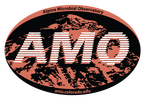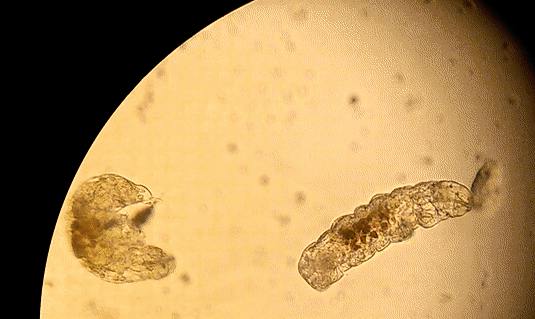|
by Pacifica Sommers Tardigrades, also known as “water bears” or “moss piglets,” are microscopic animals that have captured the public’s imagination in such forums as the new Star Trek: Discovery television series (https://www.space.com/38477-star-trek-discovery-mudd-ies-up-tardigrade-science.html) for their ability to survive the radiation of space (Rebecchi et al. 2009). Although most microbiologists would consider them microfauna, or microscopic animal life, rather than microbes strictly speaking, we are including them here because they are invisible to the naked eye. You typically need a microscope to see these creatures less than one millimeter long. However, like humans rather than bacteria, tardigrades have nuclei in their cells, and are even multicellular – that is, they are made up of many cells (Nichols 2005). Tardigrades have a piercing mouth part that some herbivorous species use to eat mosses or plant-like algae, and other predatory species use to eat microscopic animals such as nematodes or rotifers (Nichols 2005, Hohberg & Traunspurger 2009). When placed on a glass or plastic petri dish or slide to view under a microscope, tardigrades have a hard time gaining traction, and thus look like they are running in place, moving slowly: hence the name tardigrade, which means “slow stepper.” However, if they have sand or something sticky in a petri dish like agar, they can walk somewhat like an eight-legged caterpillar might. They live in many environments around the world, especially in mosses, in leaf litter, in the nutrient-poor soils of polar and alpine environments, and can even be found in the ocean (Nichols 2005). The tardigrades pictured here were extracted from cryoconite holes, or small mud puddles, on Antarctic glaciers. References
Hohberg, K., & Traunspurger, W. (2009). Foraging theory and partial consumption in a tardigrade– nematode system. Behavioral Ecology, 20(4), 884-890. Nichols, P. B. (2005). Tardigrade evolution and ecology. Dissertation, University of South Florida. Rebecchi, L., Altiero, T., Guidetti, R., Cesari, M., Bertolani, R., Negroni, M., & Rizzo, A. M. (2009). Tardigrade resistance to space effects: first results of experiments on the LIFE-TARSE mission on FOTON-M3 (September 2007). Astrobiology, 9(6), 581-591.
0 Comments
|
AuthorVarious lab members contribute to the MoM Blog Archives
October 2023
Categories |


 RSS Feed
RSS Feed
